History


Lode Runner's rich history began in Seattle in 1982, when Douglas E. Smith (a student at the University of Washington) created a game prototype, which he called Kong. The game generated so much interest from his peers that he worked full time to finish it, and then submitted it to software publishers as Miner. In 1983, Broderbund licensed the game and published it as Lode Runner for Apple II, Atari 8-bit, MSX and Commodore 64 computers. Since then, versions of Lode Runner have appeared on virtually every platform imaginable. We invite you to explore the many faces of Lode Runner both here and in Lode Runner for Xbox LIVE Arcade, which includes its own timeline.

- Developer
- Douglas E. Smith
- Publisher
- Broderbund Software
- Platform
- Apple II, Commodore 64, VIC-20, ZX Spectrum, Atari XL/XE (8 bit), MSX, Amstrad CPC, SG-1000, NEC PC Series
- Features
- 150 single-player levels (grid size: 28x16), level editor


- Developer
- Douglas E. Smith
- Publisher
- Broderbund Software, Hudson Soft for Nintendo 8-bit
- Platform
- Apple II, Commodore 64, VIC-20, ZX Spectrum, Atari XL/XE, SG-1000, Famicom, NES, NEC PC Series
- Features
- 50 single-player levels
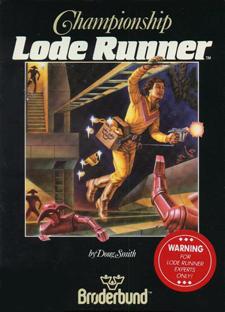

- Developer
- Douglas E. Smith
- Publisher
- Broderbund Software
- Platform
- MSX
- Features
- 50 single-player levels

- Developer
- Hudson Soft
- Publisher
- Hudson Soft
- Platform
- Famicom, NES
- Features
- 150 single-player levels (same levels as 1983 level set), level editor
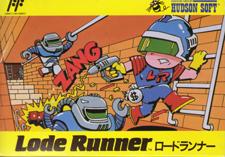

- Developer
- Irem
- Publisher
- Irem
- Platform
- Coin-op game (arcade cabinet - Jamma board)
- Features
- 24 single-player levels (all derived from the 1983 level set, but scaled down to fit the smaller 24x15 grid)


- Developer
- Irem
- Publisher
- Irem
- Platform
- Coin-op game (arcade cabinet – Jamma board)
- Features
- 30 single-player levels (10 derived from the 1983 level set, 20 original levels)

- Developer
- Irem
- Publisher
- Irem
- Platform
- Coin-op game (arcade cabinet – Jamma board)
- Features
- 30 single-player levels (several levels inspired by the 1983 level set, the rest original)
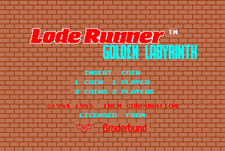 Back to top ^
Back to top ^

- Developer
- Publisher
- Platform
- Coin-op game (arcade cabinet – Jamma board)
- Features
- 30 single-player levels (several levels inspired by the 1983 level set, the rest original)


- Developer
- Don Carlston of Broderbund Software, Inc.
- Publisher
- Tsukuda Original
- Platform
- Board game)
- Features
- 8 different play boards, game only released in Japan

- Developer
- Irem
- Publisher
- Irem
- Platform
- Famicom Disk System, MSX, more...
- Features
- 55 single-player levels, 15 co-op levels, level editor
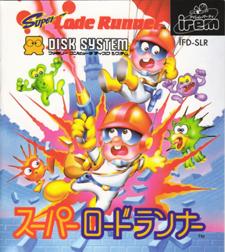 Back to top ^
Back to top ^

- Developer
- Irem
- Publisher
- Irem
- Platform
- Famicom Disk System, MSX, more...
- Features
- 30 single player levels, 30 co-op levels, level editor
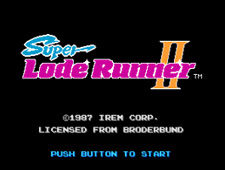 Back to top ^
Back to top ^

- Developer
- Bandai
- Publisher
- Bandai
- Platform
- Game Boy
- Features
- 50 new levels on 20x16 grid (levels 16-50 include a ‘back room'), level editor, VS. mode


- Developer
- Pack-In-Video
- Publisher
- Broderbund
- Platform
- PC Engine, Turbografx 16
- Features
- All 150 levels (1983 level set), level editor
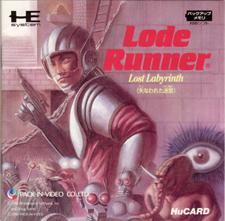 Back to top ^
Back to top ^

- Developer
- Hudson Soft
- Publisher
- Hudson Soft
- Platform
- PC Engine (Japan only), Rereleased on Wii's Virtual Console 2007
- Features
- single player levels, puzzle mode, three different 5 player battle modes (Survival, Escape and Tag), and a level editor. There are 4 different environments, each with a unique music track.
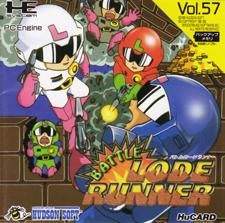 Back to top ^
Back to top ^

- Developer
- Presage
- Publisher
- Sierra Online
- Platform
- Windows, DOS, Mac OS, Saturn & PlayStation
- Features
- 150 single player levels, 2p Co-op and 2p Head-to-Head levels, level editor
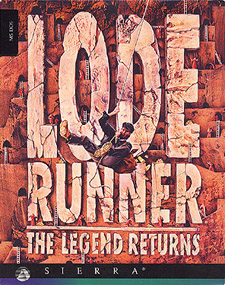

- Developer
- T&E Soft
- Publisher
- T&E Soft
- Platform
- Super Famicom (Japan only)
- Features
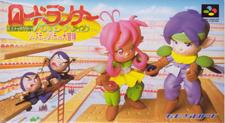

- Developer
- Presage
- Publisher
- Sierra Online
- Platform
- Windows, Mac OS
- Features
- 150 single-player levels, 2p Co-op and 2p Head-to-Head levels, level editor


- Developer
- XING Entertainment
- Publisher
- XING Entertainment
- Platform
- A dedicated handheld LCD game
- Features
- 2 full games – The Legend Returns & LR Extra, level editor

- Developer
- Game Arts Co. Ltd
- Publisher
- PATRA for Sega, Natsume for PlayStation
- Platform
- Sega Saturn (Japan only) 1997, PlayStation 1998
- Features
- 2 full games – The Legend Returns & LR Extra, level editor


- Developer
- Presage
- Publisher
- GT Interactive (Infogrames/Atari) & MacSoft
- Platform
- Windows, Mac OS
- Features
- 75 single-player levels, co-op and death-match modes, level editor
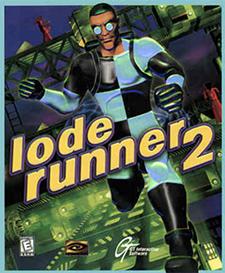

- Developer
- Big Bang Software
- Publisher
- Infogrames (U.S./Europe), Banpresto (Japan)
- Platform
- Nintendo 64
- Features
- 136 single-player levels, 20 bonus levels scattered across the planets
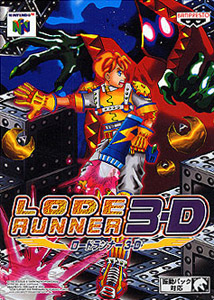

- Developer
- Nintendo
- Publisher
- Nintendo
- Platform
- Super Famicom (Japan only)
- Features
- Four worlds with scrolling levels (up to six screens), practice mode
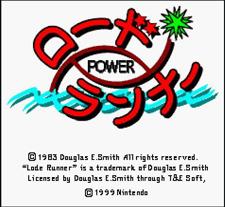

- Developer
- Psikyo
- Publisher
- Psikyo
- Platform
- Coin-op game (Japan only)
- Features
- 2-Player Vs. mode and new levels


- Developer
- Psikyo
- Publisher
- Psikyo
- Platform
- Coin-op game (Japan only)
- Features
- 2-Player Vs. mode and new levels


- Developer
- Banpresto
- Publisher
- Banpresto
- Platform
- WonderSwan (Japan only)
- Features
- 2D action, 5 worlds with 24
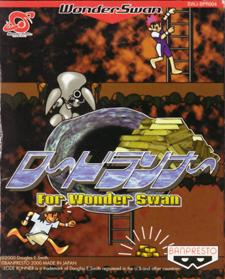

- Developer
- Publisher
- Platform
- Game Boy Color
- Features
- Side-scrolling action
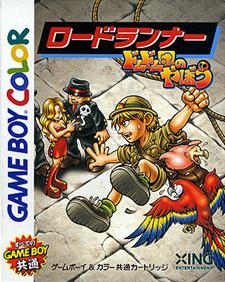

- Developer
- Success
- Publisher
- Success
- Platform
- Game Boy Advance
- Features
- 4 worlds with 24 levels each, level editor
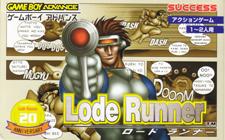

- Developer
- Hudson Soft
- Publisher
- Hudson Soft
- Platform
- Nintendo GameCube, PlayStation 2
- Features
- 3D action levels
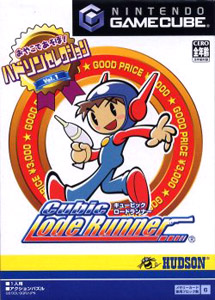

- Developer
- FT Mobile
- Publisher
- Hudson Soft
- Platform
- Mobile phone (BREW) US Release
- Features
- Classic Lode Runner action with updated graphics
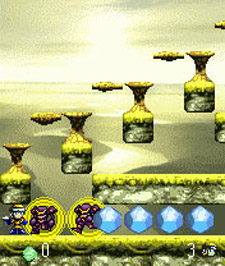

- Developer
- Hudson Soft
- Publisher
- Hudson Soft
- Platform
- Game Boy Advance
- Features
- 2 full games: Lode Runner (Famicom) & Championship Lode Runner (Famicom)


- Developer
- Hudson Soft
- Publisher
- Hudson Soft
- Platform
- Nintendo DS
- Features
- 50 single player levels, 50 championship single player levels, 30 puzzle levels, level editor (14x14 or 28x14)


- Developer
- Hudson Soft
- Publisher
- Hudson Soft
- Platform
- Mobile phone (BREW & Java)
- Features
- 50 initial levels, new art style
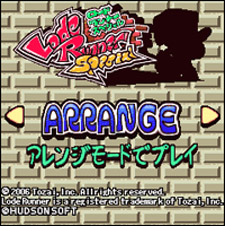

- Developer
- Hudson Soft/Nintendo
- Publisher
- Hudson Soft
- Platform
- Wii VC
- Features
- Three classic Hudson versions were re-released on the Wii Virtual Console from 2007-09.
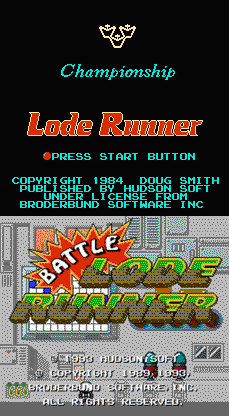

- Developer
- Hudson Soft
- Publisher
- Taito Corporation
- Platform
- Toy
- Features
- Two versions were released; one of the Runner and one of the Enemy. Multiple in-game character poses can be created by placing colored pins in the 16x16 plastic grid.
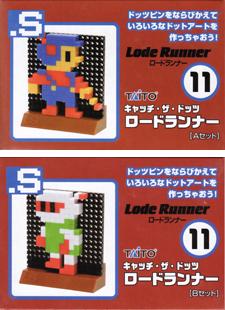 Back to top ^
Back to top ^

- Developer
- Hudson Soft
- Publisher
- Living Mobile
- Platform
- Mobile phone (Java)
- Features
- 80 levels, level editor
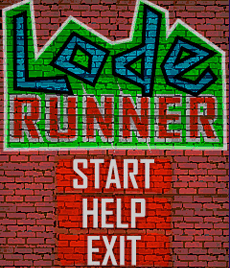

- Developer
- Hudson Soft
- Publisher
- Hudson Soft
- Platform
- iPod (click-wheel iPods only)
- Features
- Standard, Expert, Master, Gold Rush, and Puzzle modes
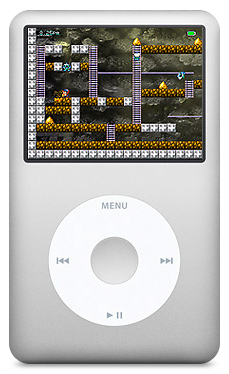

- Developer
- Tozai Games/SouthEnd Interactive
- Publisher
- Tozai Games/Microsoft
- Platform
- Xbox 360 LIVE Arcade
- Features
- 220 Levels, six modes: 1P Journey, Co-op Journey, Hang On, 2-4P Last Man, 1P Puzzle, Co-op Puzzle, Hi-Res 3D graphics, classic style 2D action, Lode Runner Community for sharing custom-designed levels, leaderboards
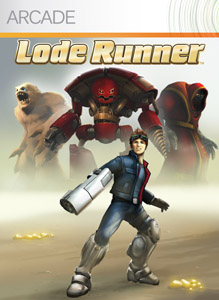

- Developer
- Tozai Games/SouthEnd Interactive
- Publisher
- Tozai Games/Sony Ericsson
- Platform
- Xperia mobile devices / Additional Android support coming soon
- Features
- Single player mode containing 80 levels and 16 bonus rooms, 50 single player puzzles, statistics tracking
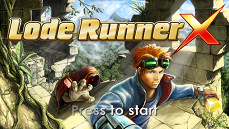

- Developer
- Tozai Games/Studio Voltz
- Publisher
- Tozai Games/Microsoft
- Platform
- Microsoft: Windows Phone 7 / Tozai Games: Android and iOS
- Features
- The original AI and level design (150 levels), two game modes, multiple control schemes, speed control, new magnification effect, custom color mapping, leaderboards, achievements


- Developer
- Tozai Games/Studio Voltz
- Publisher
- Tozai Games/KDDI
- Platform
- au Smart Pass subscription (Android)
- Features
- The original AI and level design (150 levels plus 9 au levels), two game modes, multiple control schemes, speed control, new magnification effect, custom color mapping, leaderboards, achievements
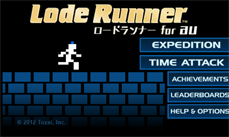
Note: These images are historical in nature and may contain names of companies that are no longer connected to Lode Runner in any manner. Reference to these companies is not intended to imply any endorsement, affiliation or current connection of any kind between Lode Runner and such companies.

